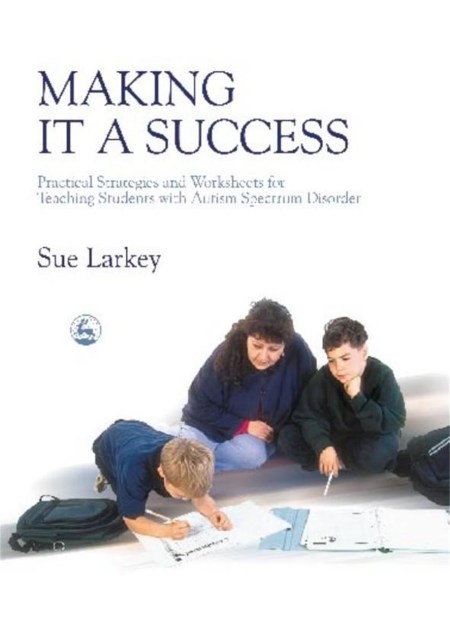Providing easy to follow, proven strategies for common teaching challenges, Making it a Success is a user-friendly resource to help teachers and teaching assistants effectively integrate students with special needs in the classroom.
With photocopiable worksheets, creative ideas for activities and teacher notes, Sue Larkey presents effective ways of helping children with autism spectrum disorder (ASD) improve their social skills, reading, writing and maths, play and general behaviour. She provides solutions for dealing with constant questioning in the classroom as well as managing children’s special interests and obsessions.
Making it a Success introduces strategies that are applicable not only to students with ASD but also to those with a range of special needs and is an essential resource for all those working in integrated classrooms.
With photocopiable worksheets, creative ideas for activities and teacher notes, Sue Larkey presents effective ways of helping children with autism spectrum disorder (ASD) improve their social skills, reading, writing and maths, play and general behaviour. She provides solutions for dealing with constant questioning in the classroom as well as managing children’s special interests and obsessions.
Making it a Success introduces strategies that are applicable not only to students with ASD but also to those with a range of special needs and is an essential resource for all those working in integrated classrooms.
Newsletter Signup
By clicking ‘Sign Up,’ I acknowledge that I have read and agree to Hachette Book Group’s Privacy Policy and Terms of Use
Reviews
This book provides easy to follow, proven strategies to help teachers and teaching assistants to successfully integrate students with special needs into the classroom. With photocopiable worksheets, creative ideas for activities and teacher notes, Sue Larkey presents effective ways of helping Autism Spectrum Disorder children with their social skills, reading, writing and maths, play and general behaviour. Sue provides solutions for dealing with constant questioning in the classroom as well as managing children's special interests and obsessions. It would be a wonderful resource for all those working in integrated classrooms.
Making it a success is a practical, user friendly book that is full of valuable strategies for helping to teach children who have autism in either integrated or specialized settings. In addition to the strategies Larkey includes photocopiable work sheets and ideas for activities to assist in the development of social skills, play, general behaviour and reading, writing and maths. Teachers and teaching assistants new to autism will fall on this book in delight as it explains not only what to do but how to do it in a clear, concise manner. With the ever increasing number of children being diagnosed with an autism spectrum disorder every school should own this book.
This is an interesting and informative book in which the author has set out to produce a book of positive approaches to provide ideas, advice and practical solutions for supporting students with Autism spectrum Disorder (ASD). Sue Larkey has had a varied teaching career having taught students with ASD in primary, secondary and specialist schools. As a result her book reflects both her academic knowledge and intuitive understanding of autism. She has been able to identify those issues most prevalent for ASD pupils within mainstream school and to suggest realistic and practical strategies to develop skills and abilities and to promote inclusion. Her advice is succinct and easily adapted to fit any scenario. I have actually trialled some of the materials from the mathematics chapter and found them to be excellent for students with ADHD and weak numeracy skills as well as for ASD students.
Sue Larkey knows the problems associated with inclusion not only from her experience as a teacher herself, but also from her academic knowledge and qualifications and from her intuitive understanding of autism. She has a remarkable ability to identify and briefly explain the difficulties experienced by a child with autism in a regular classroom and to suggest realistic and practical strategies to improve abilities and behaviour. Her advice is succinct and wise. This book is precisely what teachers ask for and need.
